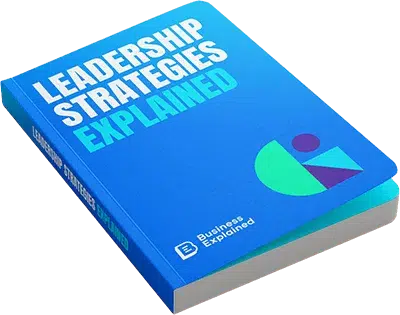Table of Contents
Effective leadership is no longer just a desirable trait but a crucial factor for success. However, even the most experienced leaders can find themselves in a challenging position, a ‘leadership gap’. The leadership gap – the space between their current state and the level of leadership required for exceptional results, is a call to action. It represents untapped potential, waiting to be harnessed through insight, development, and strategic action.
Join us as we explore the intricacies of leadership gaps, uncover their common causes, and discover actionable strategies to close them, propelling you and your organization toward unparalleled success and innovation. Let’s delve into the world of leadership development and unleash your full leadership potential!
What is the leadership gap?
The concept of a leadership gap refers to the disparity between the leadership skills an organization needs and the skills it currently possesses. The leadership gap can manifest in various ways, including a lack of visionary leaders, insufficient leadership management capabilities, or inadequate succession planning. In essence, the leadership gap highlights the areas where leadership development is needed to ensure an organization remains competitive and resilient in a rapidly changing business environment.
Leadership gaps can stem from several sources. For instance, an organization might struggle with adapting to new technologies, leading to a deficiency in digital leadership. Similarly, a company might find itself with a shortage of leaders who can effectively manage multicultural teams, especially as globalization continues to shape the business landscape. Identifying and understanding these gaps is crucial because effective leadership directly impacts organizational success, employee engagement, and overall productivity.
The leadership gap is not just a theoretical concept; it has practical implications that can significantly affect an organization’s bottom line. A study by Deloitte found that around 85% of business leaders believe their organizations are not effectively developing leadership capabilities at all levels, which poses a serious risk to long-term success. The leadership gap can lead to various challenges, such as decreased employee morale, increased turnover, and a lack of strategic direction.
Understanding what constitutes a leadership gap involves recognizing the organization’s current and future needs. As the business environment evolves, so too must the leadership capabilities within an organization. This ongoing process of assessment and development is crucial to maintaining a solid leadership pipeline. By regularly evaluating leadership gaps and implementing targeted development programs, organizations can better prepare their leaders to meet future challenges and seize new opportunities.
Common leadership gaps examples
Addressing the leadership gap within an organization is the first step toward addressing them. Here are some prevalent examples:
Need for a strategic vision
Many organizations find themselves led by managers who excel in operational efficiency but lack the ability to envision and articulate a long-term strategy. This can result in short-term gains but long-term stagnation as the organization needs to adapt to changing market conditions or innovate effectively.
Communication skills deficit
Effective communication is paramount in leadership, yet many leaders need help with this essential skill. Poor communication can lead to misunderstandings, decreased employee engagement, and a lack of alignment around organizational goals. According to a study by Gallup, only 17% of employees strongly agree that their leaders communicate effectively with their teams.
Emotional intelligence (EI)
EI involves the ability to understand and manage one’s own emotions and those of others. Leaders with high emotional intelligence can foster better teamwork, resolve conflicts more effectively, and create a positive work environment. However, many leaders lack this skill, leading to toxic work cultures and high employee turnover.
Adaptability
Adaptability is also a critical leadership quality that needs to be improved. In today’s fast-paced business environment, leaders need to be flexible and open to change. Those who are rigid in their approach can hinder innovation and slow down organizational growth. Adaptability is proven to be a crucial factor for successful leadership, yet many leaders do not prioritize developing this skill.
Decision-making ability
Influential leaders need to make informed, timely decisions to guide their organizations. However, many leaders struggle with decision paralysis, either because they lack confidence in their judgment or because they are overwhelmed by the complexity of the issues they face. This indecisiveness can stall progress and erode confidence within the team.
By recognizing these common leadership gaps, organizations can take targeted steps to address them. This might involve leadership training programs, mentorship opportunities, or changes in hiring practices to ensure a better fit for leadership roles. Addressing these gaps is essential for building a robust leadership pipeline that can drive organizational success.

Causes of leadership gaps
Understanding the causes of leadership gaps is essential for effectively addressing them. Here are some primary causes:
Inadequate leadership development programs
Many organizations do not invest sufficiently in training and developing their leaders. This can result from budget constraints, a lack of awareness about the importance of leadership development, or simply a reactive rather than proactive approach to leadership cultivation.
Rapid technological advancement
As industries evolve and new technologies emerge, the skills required for effective leadership also change. Leaders who were once effective may find themselves outpaced by these changes if they do not continuously update their skills and knowledge. This is particularly evident in the digital transformation that many industries are undergoing, which requires leaders to be proficient in new technologies and digital strategies.
Demographic changes
As baby boomers retire, there is often a gap left by the departure of experienced leaders. Younger generations may have different expectations and values, which can create a disconnect if not properly managed. Organizations need to ensure that there is a smooth transition and that younger leaders are adequately prepared to step into senior roles.
Cultural factors
Cultural factors within an organization can also create leadership gaps. An organizational culture that does not value diversity, equality, and inclusion (DEI) can miss out on a broad range of leadership potential. Leaders who do not promote an inclusive culture may struggle to engage and retain talent from diverse backgrounds, leading to a homogeneous team of leaders that lacks varied perspectives and innovative ideas.
Economic pressures
Economic pressures can also exacerbate leadership gaps. During an economic downturn, organizations might cut back on leadership development initiatives to save costs. This short-term thinking can lead to long-term problems, as the organization may find itself without the necessary leadership skills to navigate complex challenges when the economy rebounds.
Lack of mentorship and role models
Aspiring leaders need guidance and examples to follow, and without experienced mentors or role models within the organization, they may struggle to develop the skills and confidence needed for successful leadership. This can be particularly problematic in industries or organizations where the leadership pipeline is not clearly defined or supported.
Addressing the causes of leadership gaps requires a multifaceted approach. Organizations must prioritize leadership development, embrace continuous learning, and create a supportive and inclusive culture. By doing so, they can build a strong foundation for future leaders and ensure organizational success.
Impact of leadership gaps
The impact of leadership gaps on an organization can be profound and far-reaching. One of the most immediate effects is on employee engagement and morale. When leadership is lacking, employees often feel disconnected and undervalued. This can lead to decreased motivation, lower productivity, and higher turnover rates.
Another significant impact is on organizational performance. Effective leadership is crucial for setting strategic direction, making informed decisions, and driving innovation. When there are gaps in leadership skills, the organization can struggle to maintain a clear vision and purpose, leading to stagnation or decline.
Leadership gaps can also affect customer satisfaction and loyalty. Leaders play a crucial role in shaping the customer experience by setting the tone for customer service and ensuring that employees are empowered to meet customer needs. When leadership is ineffective, it can result in poor service delivery, unmet customer expectations, and, ultimately, a loss of customer trust and loyalty.
Financial performance is another area that can be significantly impacted by leadership gaps. Poor leadership can lead to inefficient resource use, missed opportunities, and costly mistakes. Companies with strong leadership capabilities generate returns that are nearly four times higher than those with weak leadership.
Moreover, leadership gaps can hinder innovation and adaptability. In a rapidly changing business environment, the ability to innovate and adapt is crucial for continuing success. Leaders who lack vision, creativity, or the willingness to embrace change can stifle innovation and prevent the organization from evolving in response to market demands. This can result in the organization falling behind its competitors and losing its market position.
Finally, they can impact organizational culture. Leaders are instrumental in shaping and maintaining an organization’s culture. When there is a lack of successful leadership, the culture can become fragmented, toxic, or misaligned with the organization’s values and goals. This can lead to a range of adverse outcomes, including increased conflict, reduced collaboration, and a decline in overall organizational health.
To mitigate these impacts, organizations must proactively address leadership gaps by investing in leadership development, fostering a positive and inclusive culture, and ensuring their leadership strategies align with their long-term goals. By doing so, they can build a resilient and dynamic leadership team capable of navigating the challenges of the modern business landscape.
Closing the leadership gap – leadership skills needed for bridging the leadership gap
Bridging the leadership gap requires a strategic and holistic approach. Here are some essential strategies:
H3: Implement a comprehensive leadership development program
One of the most effective strategies is to implement comprehensive leadership development programs. These leadership training programs should be designed to address the specific gaps identified within the organization, such as soft skills, emotional intelligence, or strategic vision. Leadership development should be an ongoing process, incorporating a mix of formal training, experiential learning, and coaching.
Foster mentorship and coaching
Mentorship and coaching are also critical components of bridging the leadership gap. Pairing emerging leaders with experienced mentors can provide valuable guidance, support, and insights. Coaches can help leaders develop specific skills, overcome challenges, and achieve their full potential.
Promote a culture of continuous learning
Organizations should encourage leaders at all levels to pursue ongoing education and professional development. This can include attending workshops, enrolling in advanced degree programs, or participating in industry conferences. Creating a learning culture ensures that leaders stay current with the latest trends, technologies, and best practices.
Implement succession planning
Succession planning is essential for closing the leadership gap. Organizations need to identify and develop high-potential employees who can step into leadership roles as they become available. This involves not only training these individuals but also providing them with opportunities to gain the necessary experience. A robust succession plan ensures a smooth transition of leadership and minimizes disruption to the organization.
Embrace diversity and inclusion
Diversity and inclusion initiatives can also help bridge leadership gaps. Diverse leadership teams bring a wide range of perspectives, ideas, and approaches to problem-solving. By promoting diversity and inclusion, organizations can tap into a broader talent pool and foster an environment where all employees feel valued and empowered to contribute.
Establish feedback and performance management systems
Regular feedback helps leaders understand their strengths and areas for improvement. Performance management systems should be designed to support leadership development by setting clear expectations, providing constructive feedback, and recognizing and rewarding successful leadership. This creates a culture of accountability and continuous improvement.
Leverage technology
Embracing technology can support leadership development. Digital tools and platforms can facilitate virtual training, enable remote coaching, and provide access to a wealth of resources and learning materials. Technology can also support data-driven decision-making by providing insights into leadership performance and development needs.
By implementing these strategies, organizations can effectively bridge the leadership gap and build a strong pipeline of capable leaders. This not only enhances organizational performance but also ensures permanent sustainability and success. Closing the leadership gap is a continuous process that requires commitment, investment, and a strategic approach, but the benefits far outweigh the efforts involved.
The leadership gap is a critical issue that affects organizations across industries. Understanding what constitutes a leadership gap and recognizing the common examples and causes of these gaps is the first step toward addressing the problem. The impact of leadership gaps can be profound, influencing employee morale, organizational performance, customer satisfaction, financial results, innovation, and organizational culture.
Bridging the leadership gap requires a comprehensive and strategic approach. Organizations can cultivate a dynamic and resilient leadership team by implementing robust leadership development programs, fostering mentorship and coaching, promoting continuous learning, planning for succession, embracing diversity and inclusion, establishing effective feedback and performance management systems, and leveraging technology.


 Risk-free Purchase: Full refund within 14 days
Risk-free Purchase: Full refund within 14 days